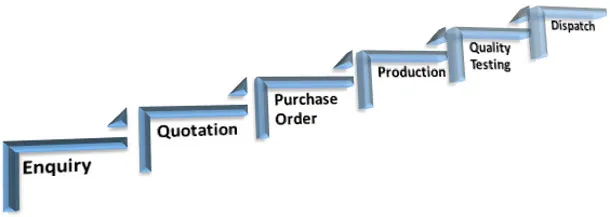Are SMBs Fueling the SaaS Revolution in India?
Until a couple of years back, software products and services were a luxury affordable only by a few exclusive companies with relatively deep pockets. The cloud SaaS (Software as a Service) model has created a window of opportunity for offering affordable software services for small business entities. For the sake of simplicity, let us confine the scope of this article to SMBs (small and Medium-sized Businesses) in India and the SaaS model.

In the telecom sector, India skipped implementing decent land-line penetration and hopped directly to an extensive mobile network. This analogy holds in the case of cloud computing also. Analysts are pointing out that Indian SMBs are a clean slate as far as IT adoption is concerned. Everyone is assuming that cloud is the next logical evolution for India based SMBs and every survey is projecting a definite and massive increase in cloud adoption in SMBs by the year 2015.
As far as surveys and statistics are concerned, I am excited by the huge numbers they are projecting. But are these huge numbers in cloud adoption rates achievable? I doubt it. It’s simply because there’s a certain gap between what the SMBs need today and what’s available to them off-the-shelf from the cloud vendors. The following discusses this gap between what’s available and current expectations.
[jbox color="yellow" border="2" radius="4" shadow="1" jbox_css="font-size:12px;"] With approximately 50 million units, India has the largest number of SMBs across the world. More than one-third of India’s GDP is attributed to the SMB sector. Nearly 40% of SMBs are penetrated with basic IT. (Source)[/jbox]
What’s the Current Status of SMBs?
There’s a definite pattern as far as most small businesses in India are concerned. Most of the SMBs are sole proprietorships headed by second generation young entrepreneurs.These young entrepreneurs are indeed more than eager to adopt IT to gain a competitive edge. Equally true is the fact that most of these businesses have a loyal but aging workforce, specifically in middle management, who resist change for whatever reason.Perhaps these employees view IT as an encroachment on their comfort zone.Others may unnecessarily feel insecure about their jobs whenever IT introduces a more efficient way to perform day to day tasks.
So it requires a highly motivated CEO to convince his work force to make use of the new technology.
What Software Do SMBs Use?
MS Office and Tally are undoubtedly the most popular software solutions in India. Both of them had some early bird advantages, apart from their simplicity and affordability.
For most of the SMBs the best way to maintain records still goes like this: Write in MS-Word (or excel sheet), get a print,and tag-pin them in some physical folder. How painful is it to extract any report out of these numerous voluminous folders? But there’s a silver lining too, because most of them know and understand that IT can help them in mitigating their pain.
[jbox color="yellow" border="2" radius="4" shadow="1" jbox_css="font-size:12px;"] Tally powers 95% of businesses in India.Also, despite being not so affordable, MS Office is present on a majority of the desktops around the world.MS office is best in class, but the secret behind its immense global popularity may be derived from an interesting quote from Bill Gates way back in 1998:"As long as they're going to steal it, we want them to steal ours” (Source) [/jbox]
From my observations, SMBs mostly rely on Gmail or Yahoo mail services for e-mail communications. A few also have a Google Apps for business account.Google Apps was very popular until May 10, 2011, when its topped offering Google Apps with up to 50 users for free,and cut back to allowing only 10 users for free. It also seems that Google Apps lost ground is benefiting Yahoo! Small Business, which is currently offering 1000 Email accounts on a custom domain for Rs. 250/month.
Some SMBs also use Email services provided by local hosting providers who double up as domain name registrars and IT solutions provider (read static website). These are popular, despite that they are a bit unreliable and erratic at times, because they are cheaper.
What Type of Cloud Based Services are Available?
- Communication and Collaboration
- CRM
- Project Management
- Help Desk
What Do SMBs Require?
Their requirements can be categorized into the following groups.
- Communication and Collaboration. (Basic requirement – a must have)
- Record Keeping - Quick entry, sharing and retrieval of reports. (Advance requirement)
There are many good apps/services to solve the first requirement. The second requirement is where there lies big opportunity,along with bigger challenges.
Are There Any Cloud Related Major Concerns?
Contrary to popular belief, I must point out that cloud services security is not a major worry in India for SMBs. I fully agree with Narasimhan (Kishore) Mandyam, CEO of PK4, when he said in one of his interviews: “We very quickly learned that most Indian buyers fall into one of two categories - they either know enough to trust SaaS or they don't care”.
So what is their major concern? Let me repeat the oft-repeated: India is a price conscious market. Pricing that works well in the West might not work with Indian consumers.
Opportunities
The SMBs are certainly not prepared to work with multiple web apps. It’s very difficult for them to maintain a separate application each for Accountancy, Human Resources, Payroll, CRM, Invoicing, Inventory etc.Instead, they require a simple application to automate their day-to-day core operations. For example, most of the manufacturing firms will have the following steps as work flow

You may call it an ERP (Enterprise Resource Planning) but it doesn’t matter to them. Asof today, the market certainly lacks these type of applications and services. Similar opportunities lie in other verticals, such as pharmaceuticals, export, small infrastructure developers and education (although education is considered a non-profit sector in India).
Challenges
It’s an intimidating task to develop an end-to-end ERP type solution on the SaaS model because most of the smaller enterprises lack standard practices. An ERP type of application on the SaaS model will definitely be a big challenge,as every small business has some unique features. For example, many of them work on trust.Verbal communication is key, and any change is just a phone call away. Even if they have a written agreement (for instance, a purchase order), the customer is nonetheless free to negotiate a further discount just at the time of invoicing!
For these businesses, can you build a SaaS that meets their requirements, and is still offered at an attractive price?To give you an idea of what is expensive in India’s SMBs context, I’ve heard owners of many SMBs complaining that Google Apps for business, which charges just $5/user/month, is expensive!
One last, small obstacle worthy of mention is that cloud solutions will bring a lot of transparency,in terms of process and financial transactions, to these businesses. Are the SMBs prepared for such a high level of transparency, which may interfere with their tax saving schemes?
Let’s Get Real
To the wannabe tech-entrepreneurs who are brainstorming startup ideas for next generation products, I think there are ample real world problems that need to be sorted out immediately. So before venturing out to tackle the next generation complex video-streaming problem or creating something to compete with sophisticated Google Glass, why not first solve a real world simple problem. Target one vertical at a time. The technology has matured enough to take on this challenge. What do you think?

About the AuthorBasant N. Singh is a Software Engineer. He loves Quizzing, Nature and Day-Dreaming! Discovering the joys of technology at Techno-Pulse






